TIRADS Calculator & Report Generator
References:
- Tessler FN, Middleton WD, Grant EG, et al. ACR Thyroid Imaging, Reporting and Data System (TI-RADS): White Paper of the ACR TI-RADS Committee. J Am Coll Radiol. 2017;14(5):587-595. doi:10.1016/j.jacr.2017.01.046
- Tappouni RR, Itri JN, McQueen TS, Lalwani N, Ou JJ. ACR TI-RADS: Pitfalls, Solutions, and Future Directions. Radiographics. 2019 Nov-Dec;39(7):2040-2052. doi: 10.1148/rg.2019190026. Epub 2019 Oct 11. PMID: 31603734.
All images in this calculator have been obtained from ACR's TI-RADS atlas. Click here to download the full document for TI-RADS from ACR's website.
ACR TIRADS flowchart used in this calculator
Related Calculators:
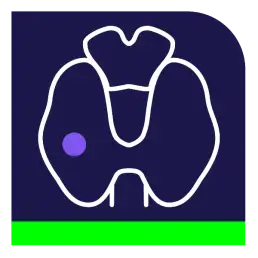
More about the TIRADS Calculator and Report Generator
The Thyroid Imaging Reporting and Data System (TI-RADS™) calculator is a structured tool designed to help clinicians assess thyroid nodule malignancy risk based on ultrasound features. Built on the American College of Radiology (ACR®) classification, the TIRADS framework promotes standardized interpretation and reporting, improving communication among radiologists, endocrinologists, and primary care physicians. By translating ultrasound findings into a clear point-based score, the calculator supports clinical decisions about biopsy, follow-up, or observation.
Rationale and Evolution of the TIRADS System
Thyroid nodules are common, especially in iodine-sufficient regions and older populations, with ultrasound detection rates as high as 68% in adults. While most are benign, a small portion may be malignant - typically fewer than 15% of biopsied nodules prove to be cancerous. Before TI-RADS, variability in ultrasound descriptions often led to inconsistent management and unnecessary biopsies. The ACR® TIRADS system introduced a structured, point-based approach to improve consistency, reduce unnecessary fine-needle aspiration biopsies (FNAB), and identify clinically significant cancers earlier.
The model assigns points to five ultrasound features, combining them into categories that estimate malignancy risk and guide management. This evidence-based approach is now widely used in radiology and endocrinology practice, with multiple validation studies supporting its clinical utility.
Diagnostic Performance and Validation
Multiple studies have evaluated the diagnostic performance of ACR TI-RADS across diverse clinical settings:
- A meta-analysis of 16 studies involving 21,882 thyroid nodules demonstrated pooled sensitivity of 89% and specificity of 70% for ACR TI-RADS risk stratification
- Research shows ACR TI-RADS has a negative predictive value of 97.7%, making it effective for screening patients and determining whether biopsy is needed or close follow-up is more appropriate
- Studies indicate that using TI-RADS ≥4 as a cutoff can detect malignant nodules with sensitivity of approximately 91.67%, though specificity varies depending on the specific threshold used
- Comparative studies show ACR TI-RADS demonstrates higher specificity compared to ATA guidelines (37% vs 7%), though with slightly lower sensitivity (86% vs 100%), effectively reducing unnecessary biopsies while maintaining diagnostic capability
- Implementation of ACR TI-RADS can significantly reduce the number of nodules recommended for biopsy - studies show reductions ranging from 35% to over 40% compared to other guideline systems
- ACR TI-RADS shows particular strength in identifying lower-risk nodules that can be safely monitored rather than biopsied, helping avoid unnecessary invasive procedures
Scoring Breakdown: Key Sonographic Features
The TI-RADS calculator evaluates five ultrasound characteristics, each contributing to the total score based on evidence-based malignancy associations:
- Composition (0- 2 points): Ranges from purely cystic (0 points) to solid (2 points). Mixed or spongiform nodules fall between these categories. Solid nodules carry higher malignancy risk.
- Echogenicity (0-3 points): Compares brightness to normal thyroid tissue. Markedly hypoechoic nodules receive the most points (3) due to stronger association with malignancy. Isoechoic and hyperechoic nodules carry lower risk.
- Shape (0 or 3 points): Taller-than-wide nodules (anteroposterior dimension greater than transverse) receive 3 points due to significant malignancy association. Wider-than-tall nodules receive 0 points.
- Margins (0-3 points): Smooth margins suggest benign characteristics (0 points). Irregular, lobulated, or extrathyroidal extension receives higher scores, with irregular margins being particularly concerning.
- Echogenic Foci (0-3 points): Includes various calcification patterns. Punctate echogenic foci (microcalcifications) are most concerning and receive 3 points. Macrocalcifications, peripheral/rim calcifications, and comet-tail artifacts receive varying points based on malignancy association.
TI-RADS Categories and Malignancy Rates
The total score determines the TI-RADS™ category, each associated with specific malignancy risk estimates from validation studies:
- TR1 (0 points): Benign - No follow-up required. Malignancy risk: essentially 0%
- TR2 (≤2 points): Not suspicious - No follow-up unless clinically indicated. Expected malignancy risk: less than 2%
- TR3 (3 points): Mildly suspicious - Follow-up or biopsy may be considered depending on size. Studies show malignancy rates of approximately 5-14.1% in this category
- TR4 (4-6 points): Moderately suspicious - Biopsy recommended if size threshold is met. Research indicates malignancy rates ranging from 11.6% to 50% depending on specific features and nodule size
- TR5 (≥7 points): Highly suspicious - Strong consideration for biopsy ≥1 cm. Studies report malignancy rates of 65-100% in this category, with higher rates observed in nodules with multiple suspicious features
| Category | Total Points | Risk Level | Observed Malignancy Range |
|---|---|---|---|
| TI-RADS 1 | 0 | Benign | ~0% |
| TI-RADS 2 | 2 | Not Suspicious | <2% |
| TI-RADS 3 | 3 | Mildly Suspicious | 5-14% |
| TI-RADS 4 | 4-6 | Moderately Suspicious | 12-50% |
| TI-RADS 5 | 7+ | Highly Suspicious | 65-100% |
Size-Based Management Recommendations
Each TI-RADS category provides specific biopsy and follow-up recommendations based on nodule size, balancing detection of clinically significant malignancies with avoidance of unnecessary procedures:
- TR1 (Benign): No follow-up needed regardless of size
- TR2 (Not suspicious): No routine follow-up recommended. Consider follow-up only if clinically indicated
- TR3 (Mildly suspicious): FNA recommended if ≥2.5 cm; ultrasound follow-up if ≥1.5 cm. Research supports conservative management for smaller TR3 nodules due to low malignancy risk
- TR4 (Moderately suspicious): FNA recommended if ≥1.5 cm; consider ultrasound follow-up for nodules 1.0–1.4 cm. Studies indicate small TR4 nodules (<1.5 cm) carry malignancy risk around 5.7%
- TR5 (Highly suspicious): FNA recommended if ≥1.0 cm; consider follow-up for nodules 0.5–0.9 cm. Research shows small TR5 nodules (<1.5 cm) not meeting biopsy criteria still carry 25% malignancy risk, warranting close surveillance
These size thresholds align with ACR® recommendations and have been validated to balance sensitivity with the avoidance of unnecessary procedures, reducing biopsy rates by 35-40% compared to size-only criteria.
Application in Clinical Workflow
Thyroid ultrasound is often the first imaging step for patients with palpable thyroid nodules or incidental findings on other imaging. The TI-RADS calculator simplifies interpretation by providing a consistent scoring method, especially in multidisciplinary or high-volume settings. It helps clinicians quickly convert descriptive findings into evidence-based recommendations.
The calculator should be integrated with clinical context, including:
- Personal or family history of thyroid cancer or genetic syndromes associated with thyroid malignancy
- History of head or neck radiation exposure in childhood
- Rapid nodule growth or development of compressive symptoms (dysphagia, voice changes)
- Abnormal thyroid function tests (though most malignant nodules occur in euthyroid patients)
- Presence of suspicious cervical lymphadenopathy on ultrasound
- Patient age and gender (malignancy risk varies by demographic factors)
Impact on Reducing Unnecessary Biopsies
One of the key benefits of ACR TI-RADS is its ability to reduce unnecessary fine-needle aspiration procedures:
- Studies show that strict application of ACR TI-RADS criteria can reduce biopsies by 35-42% compared to older guidelines recommending biopsy for all nodules ≥1 cm
- The higher size thresholds for lower-risk categories (2.5 cm for TR3, 1.5 cm for TR4) contribute significantly to reducing unnecessary FNABs while maintaining high sensitivity for malignancy detection
- Research indicates that avoiding biopsies in TR2 nodules is safe, with malignancy risk remaining below 2% and excellent negative predictive value
- The system helps clinicians distinguish nodules requiring immediate intervention from those suitable for surveillance, reducing patient anxiety and healthcare costs
- Comparative studies show ACR TI-RADS achieves better specificity than ATA guidelines, avoiding more unnecessary biopsies while detecting the vast majority of clinically significant malignancies
Clinical Applications
The TI-RADS calculator serves multiple clinical purposes across various healthcare settings:
- Characterizing incidental nodules detected on CT, MRI, PET scans, or carotid ultrasound examinations
- Guiding FNA decisions in asymptomatic patients with thyroid nodules discovered during routine examination
- Standardizing follow-up recommendations for nodules not meeting biopsy criteria, ensuring consistent surveillance protocols
- Improving communication among referring providers, radiologists, endocrinologists, and surgeons through standardized terminology
- Supporting quality assurance programs by providing objective, reproducible criteria for nodule assessment
- Facilitating patient education by translating ultrasound findings into understandable risk categories
- Research and outcomes tracking through consistent classification enabling comparison across institutions and time periods
Comparison with Other Classification Systems
Several thyroid nodule classification systems exist globally, each with distinct features:
- ACR TI-RADS: Emphasizes higher size thresholds for biopsy, resulting in excellent specificity (37-70% across studies) and significant reduction in unnecessary biopsies. Point-based scoring provides objective assessment.
- ATA Guidelines: Pattern-based approach with higher sensitivity (often 100% in validation studies) but lower specificity (7-24%), leading to more biopsies. Size threshold of 1 cm for most suspicious nodules.
- Korean TI-RADS (K-TIRADS): Demonstrates highest sensitivity among major systems but lower specificity. More aggressive biopsy recommendations with 1 cm threshold for suspicious features.
- EU-TIRADS: European system with pattern-based classification similar to ATA. Performance characteristics generally fall between ACR and K-TIRADS systems.
Comparative studies suggest ACR TI-RADS offers optimal balance between detecting malignancies and avoiding unnecessary procedures, though system selection may depend on institutional priorities and patient population characteristics.
Limitations and Clinical Judgment
The TI-RADS calculator supports, but does not replace, clinical judgment. Important limitations include:
- Operator dependency: Ultrasound interpretation requires training and experience. Features like margins, echogenicity, and composition may be assessed differently by various observers.
- Subjectivity in feature assessment: Distinguishing between "hypoechoic" and "markedly hypoechoic" or between "smooth" and "lobulated" margins involves subjective judgment that can affect scoring.
- Size measurement variability: Accurate size assessment is critical for management recommendations but can vary between examinations and operators.
- Clinical context limitations: TI-RADS scoring doesn't directly account for patient history, symptoms, or laboratory findings that may alter management.
- Nodule growth assessment: Research indicates nodule growth has limited value in predicting malignancy, with positive predictive values as low as 5.6% for growing nodules.
- Small nodule risk: While size thresholds reduce biopsies, studies show small TR4 and TR5 nodules below biopsy cutoffs still carry 5.7% and 25% malignancy risk respectively, requiring clinical judgment about surveillance.
- Molecular and cytologic findings: Genetic testing, repeat cytology, and molecular markers may provide additional information beyond ultrasound features alone.
These limitations underscore the importance of integrating TI-RADS scoring with comprehensive clinical assessment and multidisciplinary discussion when appropriate.
Utility Across Clinical Settings
The TI-RADS calculator demonstrates value across diverse healthcare environments:
- Academic medical centers: Supports teaching by providing standardized framework for trainee education and promotes consistency across faculty members
- Community hospitals: Enables general radiologists to apply evidence-based criteria without subspecialty expertise in thyroid imaging
- Outpatient imaging centers: Facilitates efficient, high-quality thyroid ultrasound interpretation in high-volume settings
- Endocrinology practices: Helps endocrinologists interpret ultrasound reports and make management decisions consistent with current guidelines
- Training programs: Studies show residents and fellows can achieve excellent diagnostic performance with TI-RADS after appropriate training
- International settings: Validation studies from multiple countries support TI-RADS applicability across diverse patient populations
Supporting Clear Communication
Structured TI-RADS-based reporting enhances communication throughout the care continuum:
- Provides standardized terminology that reduces ambiguity and improves understanding between imaging specialists and referring clinicians
- Offers clear management recommendations tied to specific risk categories, reducing uncertainty about next steps
- Enables patient education through understandable risk stratification that helps patients grasp their clinical situation
- Facilitates multidisciplinary discussion by providing common language for radiology, endocrinology, pathology, and surgical teams
- Supports documentation consistency that improves quality of medical records and medicolegal clarity
- Allows outcome tracking through standardized reporting that enables quality improvement initiatives
Summary
The TI-RADS calculator is a practical tool for standardized thyroid nodule evaluation using ultrasound features. Based on the ACR® classification and validated in multiple clinical studies, it supports consistency, communication, and evidence-based management. The system demonstrates sensitivity of approximately 89% and specificity of 70%, with particularly high negative predictive value (97.7%) for excluding malignancy in lower-risk categories. By reducing unnecessary biopsies by 35-40% while maintaining detection of clinically significant malignancies, TI-RADS optimizes resource utilization and patient care. However, it should always complement, not replace, clinical judgment and individualized assessment that considers the complete clinical picture.
Frequently Asked Questions (FAQ)
- What does TI-RADS stand for?
Thyroid Imaging Reporting and Data System, a structured scoring method created by the ACR® to standardize thyroid ultrasound interpretation and reduce variability in reporting. - How accurate is the ACR TI-RADS system?
Multiple validation studies show ACR TI-RADS has sensitivity of approximately 89% for detecting malignancy and specificity of 70%. The negative predictive value is particularly high at 97.7%, making it effective for identifying nodules that can be safely observed rather than biopsied. However, performance can vary based on reader experience and patient population. - Can I rely on the TI-RADS score alone for diagnosis?
No. TI-RADS provides risk stratification to guide management decisions, but should always be integrated with clinical history, physical examination findings, laboratory results, and physician judgment. Patient-specific factors like family history, radiation exposure, or concerning symptoms may warrant different management than TI-RADS scoring alone would suggest. - What are the malignancy rates for each TI-RADS category?
Research shows the following approximate malignancy rates: TR1 (benign): essentially 0%; TR2 (not suspicious): <2%; TR3 (mildly suspicious): 5-14%; TR4 (moderately suspicious): 12-50%; TR5 (highly suspicious): 65-100%. These ranges vary based on specific nodule characteristics and the population studied. - Does every thyroid nodule need biopsy?
No. Most thyroid nodules are benign, and ACR TI-RADS helps identify which ones require biopsy based on their risk profile and size. Studies show TI-RADS can reduce unnecessary biopsies by 35-40% compared to older guidelines that recommended biopsy for all nodules ≥1 cm, while still detecting the vast majority of clinically significant malignancies. - Why are the size thresholds different for different TI-RADS categories?
Higher-risk categories have lower size thresholds for biopsy because even smaller nodules pose significant malignancy risk. For example, TR5 nodules are biopsied at ≥1 cm due to 65-100% malignancy risk, while TR3 nodules require ≥2.5 cm given their lower 5-14% malignancy rate. This approach balances detection of significant cancers with avoidance of unnecessary procedures. - Is TI-RADS only used in radiology?
While developed primarily for radiologists, TI-RADS is increasingly used by endocrinologists, primary care physicians, and surgeons to interpret ultrasound reports and guide management decisions. The standardized terminology facilitates communication across specialties. - How does ACR TI-RADS compare to other classification systems?
Comparative studies show ACR TI-RADS offers higher specificity (37-70%) than ATA guidelines (7-24%), meaning it avoids more unnecessary biopsies. K-TIRADS shows highest sensitivity but lower specificity. ACR TI-RADS strikes a balance, detecting most malignancies while significantly reducing unnecessary procedures. - What if my nodule is below the size threshold for biopsy?
Nodules below biopsy thresholds typically receive follow-up ultrasound recommendations at specific intervals (often 1-2 years for lower-risk categories). Research shows that small TR4 and TR5 nodules below biopsy cutoffs still carry some malignancy risk (5.7% and 25% respectively), so surveillance is important. Your physician will consider growth patterns, clinical factors, and your individual circumstances. - Are there limitations to the TI-RADS system?
Yes. TI-RADS involves subjective elements like distinguishing echogenicity levels or margin characteristics, which can vary between observers. It doesn't directly incorporate clinical history, symptoms, or laboratory findings. Additionally, studies indicate that nodule growth has limited predictive value for malignancy. These limitations emphasize the importance of integrating TI-RADS with comprehensive clinical assessment. - Can less experienced radiologists use TI-RADS effectively?
Research indicates that with appropriate training, less experienced readers including residents and fellows can achieve good diagnostic performance using TI-RADS. The structured, point-based approach helps standardize interpretation. However, specific training on distinguishing key features (like margin characteristics and calcification types) is beneficial for optimal performance. - Should a nodule be biopsied if it's growing?
Not necessarily. Research shows nodule growth has limited value in predicting malignancy, with studies reporting positive predictive values as low as 5.6% for growing nodules. Growth should be considered alongside TI-RADS classification, growth rate, and clinical context rather than triggering automatic biopsy.

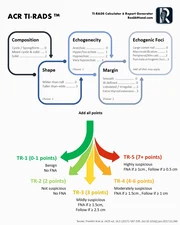
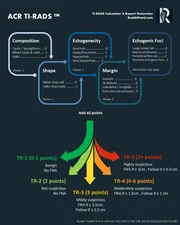

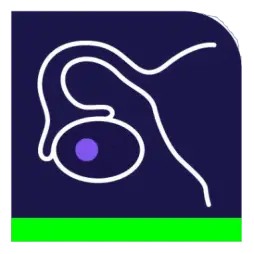

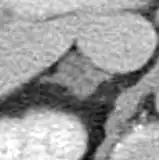
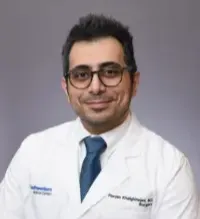

Hi there,
I just used the TI-RADS calculator for a nodule with the following charactristics:
Nodule #1:
– Location: left lobe (mid segment)
– Size: 0.7 cm
– Composition: Solid or almost completely solid
– Echogenicity: Hypoechoic
– Shape: Wider than tall
– Margins: Smooth
– Additional findings: Peripheral/rim calcifications
And it has classed the nodule as TR 4 rather than 5.
Really appreciate the tool 🙂
Hello Orla,
Thanks for your feedback. Based on the characteristics you listed: solid (2), hypoechoic (2), peripheral/rim calcifications (2), smooth margins (0), wider than tall (0), the total comes to 6 points, which corresponds to TR-4. Could you clarify which feature you counted that led to TR-5?
What an incredibly helpful tool! Thank you!